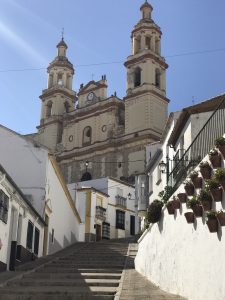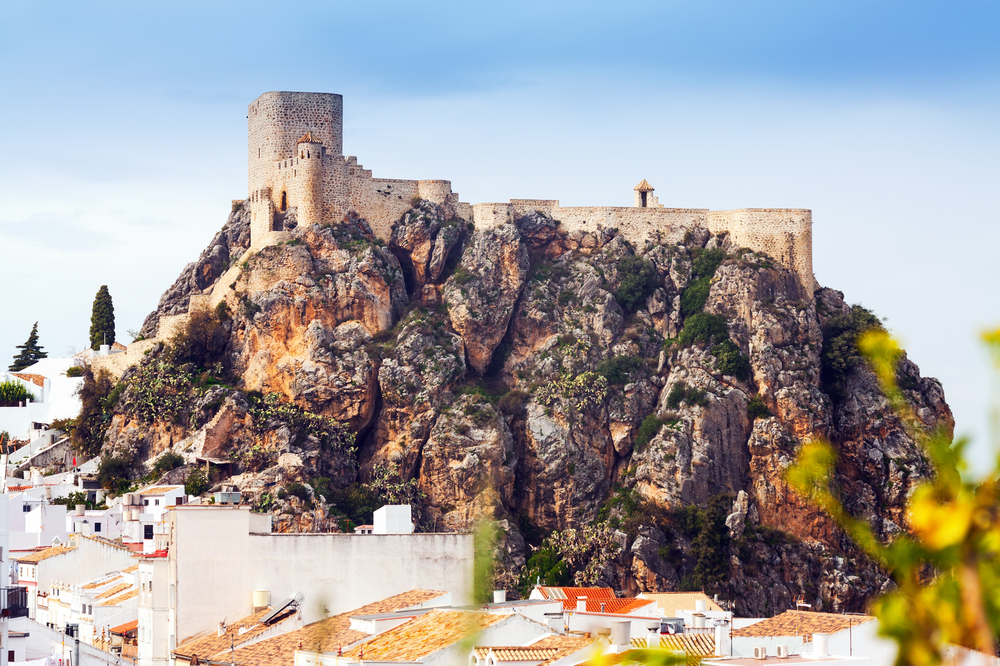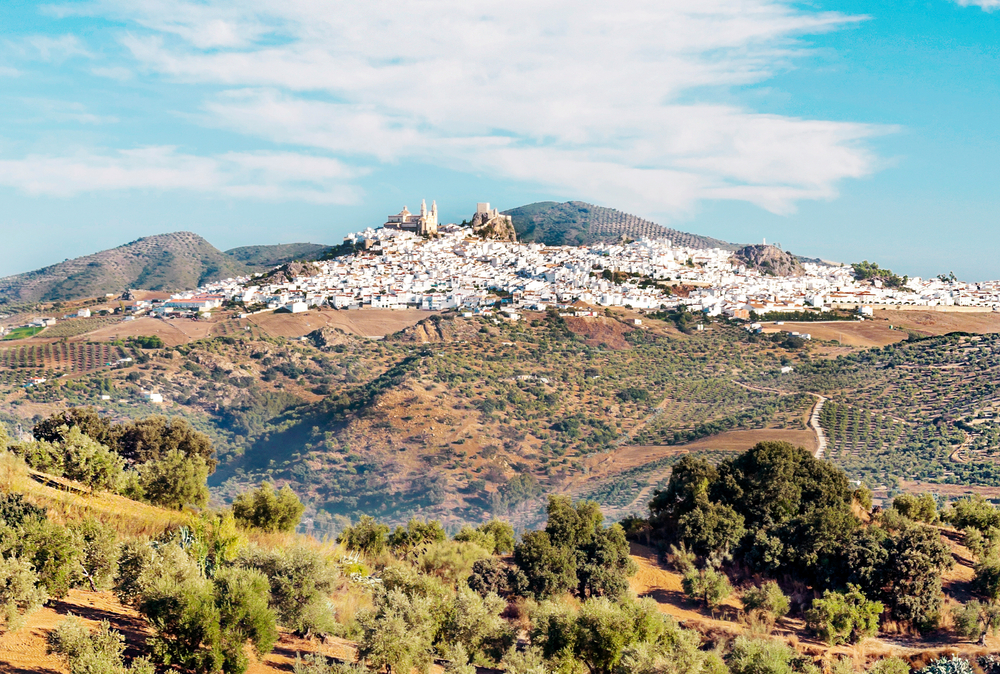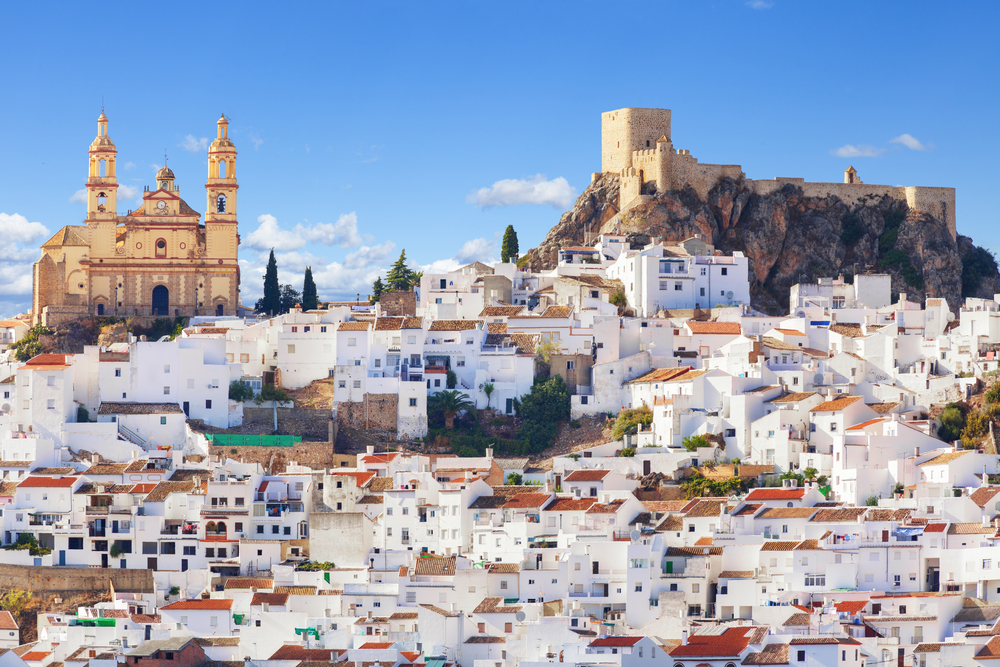From 247 locations, a single destination is Spain’s new rural tourism capital 2021. Organised annually by online portal Rural Escape, users elect ideal destination in rural Spain.
Out of the 10 finalists, the white town of Olvera in the Andalucian province of Cádiz remained. With 21,794 votes, Olvera is now Spain’s rural tourism capital in 2021. Daroca (Zaragoza) finished second and Yeste in Albacete came third. They were followed by Taramundi (Asturias) and Cuacos de Yuste (Cáceres). The list ends with Aia in the Basque province of Gipuzkoa, Chelva in Valencia, Sepúlveda in Segovia, Ortigueira in La Coruña and La Baronia de Rialb in Lerida with almost all of them just under 10,000 votes.
Ruta de los Pueblos Blancos
Olvera is a beautiful town of whitewashed houses on the Route of the White Villages (Ruta de los Pueblos Blancos). It sits on a hill amidst rolling fields of ancient olive trees, dominated by an Arab fortress and an extensive city wall. Traces of centuries of Arab rule can be seen throughout the town.
 The historic core of Olvera lies at the foot of what was once the fortress. Now two towers of the spectacularly situated Nuestra Señora de la Encarnación church point to the almost always steel blue sky. The narrow streets are decorated with colourful flower pots.
The historic core of Olvera lies at the foot of what was once the fortress. Now two towers of the spectacularly situated Nuestra Señora de la Encarnación church point to the almost always steel blue sky. The narrow streets are decorated with colourful flower pots.
Undoubtedly, it was the beauty of this place that dazzled the Muslims. They occupied the area in the 8th century and brought their olive trees with them. Olvera’s privileged location made it a reference in the kingdom of Granada, which ended with the construction of the castle around the end of the 12th century.
Olvera Castle

In 1985, Olvera was declared a Heritage of Cultural Interest, although there are hardly any remains of the original castle due to later renovations by Christian rulers. The fort has two floors you can visit. The view from the top of the tower is the well-deserved reward for climbing the winding spiral staircases. From above you have a good view of the remains of the Arab wall. An irrefutable proof of the defensive importance the fort once had. The old wall extends around the Barrio de la Villa, which was once an Arab medina.
Casa de la Cilla
Besides the castle, Casa de la Cilla is also one of the essential places to visit in Olvera; owned by the Dukes of Osuna well into the 19th century. It served other purposes over time, such as a women’s prison, a warehouse and even a school. Renovated in 1999, it now functions as the headquarters of Tourism and the La Frontera y los Castillos Museum, with a permanent collection and information about the popular and beautiful Vía Verde de la Sierra.
The Dukes of Osuna have done much more for Olvera. They ordered the construction of the church of Nuestra Señora de la Encarnación at the end of the 18th century. This beautiful neoclassical temple replaced the church already there. Inside is an 18th century engraving of Saint Sebastian.
Virgen de los Remedios
Two kilometres from Olvera is the sanctuary of the Virgen de los Remedios. Dedicated to the partron saint of Olvera, the seventeenth-century temple is the site for the annual Lunes de Quasimodo pilgrimage.
Via Verde de la Sierra

Olvera lies within Via Verde de la Sierra route, an old railway line that is a mecca for walkers, cyclists or visitors on horseback. This route is 38 kilometress long and extends through the Mediterranean forest. With a little luck you can spot griffon vultures, falcons or eagle owls in the nature reserve of Mirador del Peñon de Zaframagón. In addition to being a route of great tourist interest for the area, the Via Verde de la Sierra is one of the best green routes in Europe.
Olive oil
It is no coincidence olive trees surround this city in Cádiz. The Muslims’ love for the olive and the liquid gold turned the southern fields into green blankets that defied the drought of their land. Olvera is a large producer of olive oil within its own designation of origin Sierra de Cádiz, led by (among others) the olive variety Lechín.
Extra virgin olive oil is one of the main characters on the table of the inhabitants of Olvera. It forms the basis of the typical Andalucian dishes of gazpacho and salmorejo. Olvera has a number of bars and restaurants where you can get acquainted with the local cuisine. Try a famous ‘pegás soup’. An egg-less omelette whose dough is made with flour, olive oil and wild asparagus. A very authentic and popular dish in the area. The municipality organises a pegas soup competition every April.
As Spain’s capital of rural tourism 2021, Olvera should now be firmly on the map.


